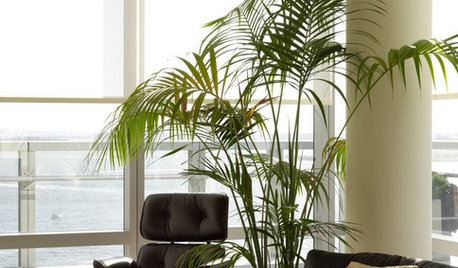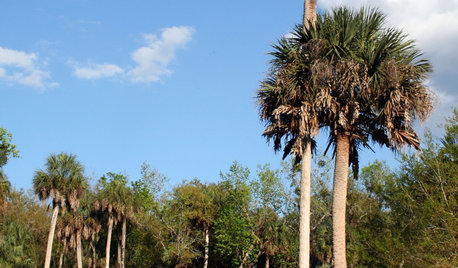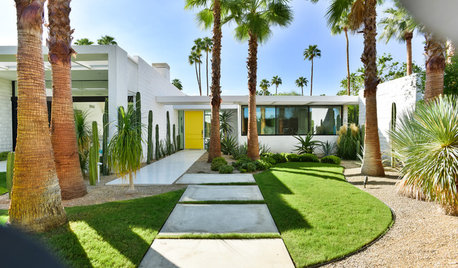Palm Trees in ABQ - Questions For All Locals
abqpalms
18 years ago
Related Stories

DECORATING GUIDESPalm Trees Take Interiors on a Tropical Vacation
Conjure a sultry vibe or bring welcome life to modern rooms. Whatever your interior design style, palm trees are the ticket to enhancing it
Full Story
TREESGreat Design Plant: Sabal Palm Enchants in Balmy Sites
Towering and tolerant, this tree blends in, stands out and happily stars in vacation photos
Full Story
GARDENING GUIDESNo-Regret Plants: 5 Questions Smart Shoppers Ask
Quit wasting money and time at the garden center. This checklist will ensure that the plants you're eyeing will stick around in your yard
Full Story
LANDSCAPE DESIGNCelebrate a Sunny Climate With the Right Leafy Palm for Your Site
So you get freezes or floods. So your garden is small. These palms send excuses riding off into the tropical sunset
Full Story
GREEN DECORATING8 Questions to Help You See Through Green Hype
With the ecofriendly bandwagon picking up some dubious passengers, here's how to tell truly green products and services from the imposters
Full Story
SELLING YOUR HOUSE15 Questions to Ask When Interviewing a Real Estate Agent
Here’s what you should find out before selecting an agent to sell your home
Full Story
REMODELING GUIDESConsidering a Fixer-Upper? 15 Questions to Ask First
Learn about the hidden costs and treasures of older homes to avoid budget surprises and accidentally tossing valuable features
Full Story
EXTERIORSCurb Appeal Feeling a Little Off? Some Questions to Consider
Color, scale, proportion, trim ... 14 things to think about if your exterior is bugging you
Full Story
CURB APPEAL7 Questions to Help You Pick the Right Front-Yard Fence
Get over the hurdle of choosing a fence design by considering your needs, your home’s architecture and more
Full Story
HOUZZ TOURSRare Modernist Home Uncovered in Palm Springs
A custom home by modernist William Krisel gets restored and updated
Full Story





cactus_dude
abqpalmsOriginal Author
Related Professionals
West Milford Landscape Architects & Landscape Designers · Ilchester Landscape Architects & Landscape Designers · Westwood Landscape Contractors · Canby Landscape Contractors · Damascus Landscape Contractors · Farmington Landscape Contractors · Federal Way Landscape Contractors · Gresham Landscape Contractors · Holland Landscape Contractors · Mission Viejo Landscape Contractors · Nashua Landscape Contractors · New Berlin Landscape Contractors · Roseville Landscape Contractors · Tinton Falls Landscape Contractors · White Bear Lake Landscape Contractorscactus_dude
paalexan
quercus_abq
paalexan
paalexan
renopalms
abqpalmsOriginal Author
paalexan
adp_abq
SteveNMZ8a
paalexan
quercus_abq
cactus_dude
paalexan
quercus_abq
SteveNMZ8a
quercus_abq
fredbuddy
abqpalmsOriginal Author
desertlvr
cactus_dude
abqpalmsOriginal Author
cactus_dude
abqpalmsOriginal Author
aziapalm
abqpalmsOriginal Author
cactus_dude
abqpalmsOriginal Author
cactus_dude
abqpalmsOriginal Author
quercus_abq
cactus_dude
desertlvr
palmtreesrus
wineandlobos
palmtreesrus